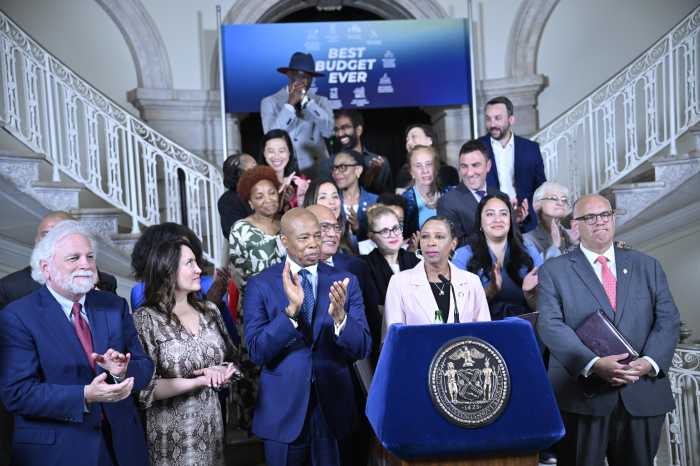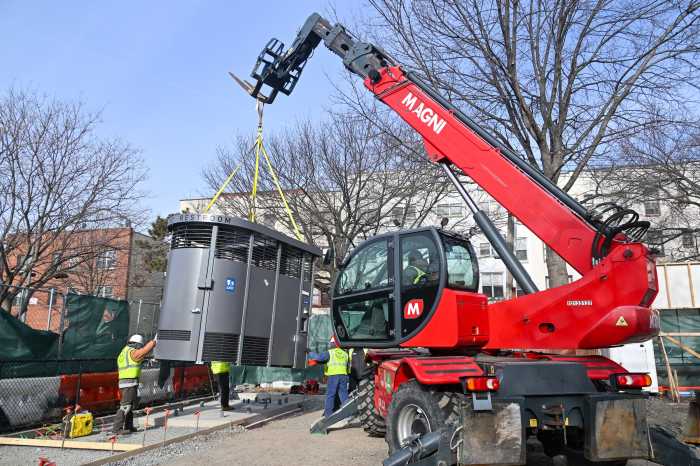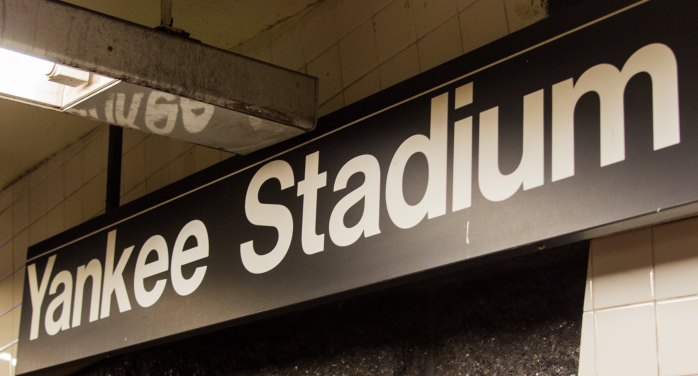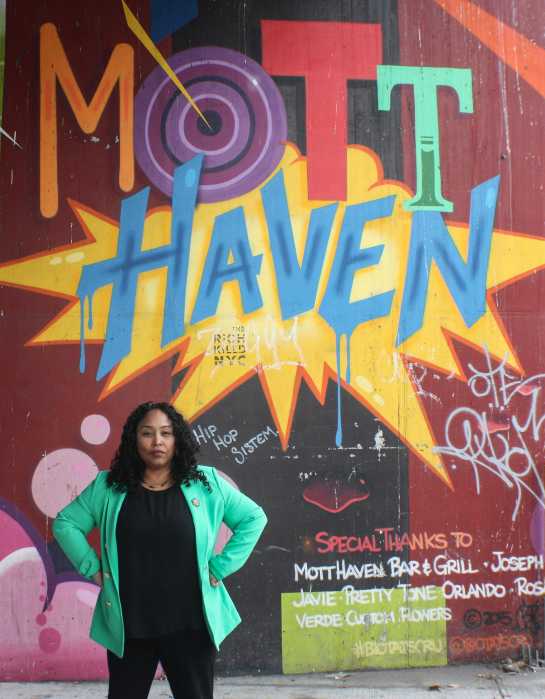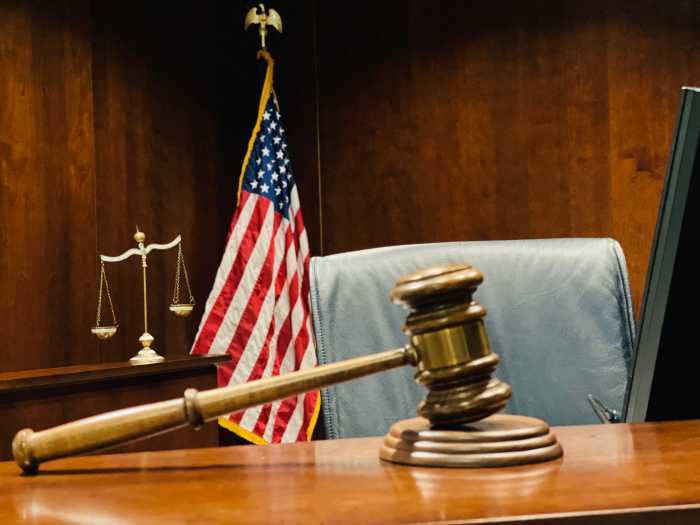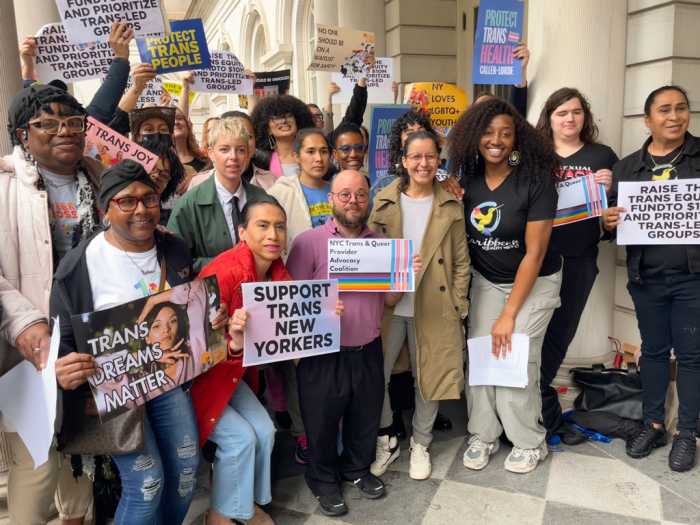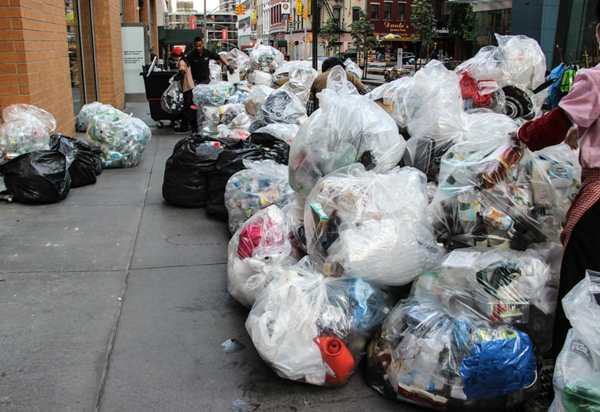
Residential buildings such as the Frank Gehry-designed, 900-unit tower at 8 Spruce St. are free to put their garbage and recycling out on the sidewalk the day before collection any time after 4 p.m. — just in time for rush hour.
BY ALEX ELLEFSON
With the residential development boom set to bring an additional 38 tons of garbage to Lower Manhattan’s sidewalks every collection day, locals are calling on the city to help prevent Downtown from becoming a literal wasteland.
“The time is ripe for us to look at this. Our streets look like the 1968 garbage strike,” said Paul Proulx, a member of the Financial District Neighborhood Association, which recently met with Sanitation Department officials to discuss solutions.
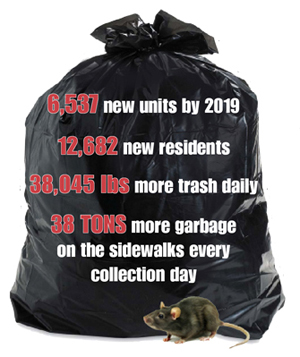 The surging residential population in Lower Manhattan, where developments have added an estimated 4,623 new units to the area since 2010, has already created a garbage glut. The amount of residential trash picked up each day in Community District 1 rose by 13.6 tons between 2010 and 2015 — representing half the increase across the entire borough of Manhattan, according to city figures. With even more trash on the way over the next three years, community leaders are urging regulators to get in front of the problem before their neighborhood is swallowed by a tidal wave of garbage.
The surging residential population in Lower Manhattan, where developments have added an estimated 4,623 new units to the area since 2010, has already created a garbage glut. The amount of residential trash picked up each day in Community District 1 rose by 13.6 tons between 2010 and 2015 — representing half the increase across the entire borough of Manhattan, according to city figures. With even more trash on the way over the next three years, community leaders are urging regulators to get in front of the problem before their neighborhood is swallowed by a tidal wave of garbage.
“This is going to be a top priority for us in the fall,” said Pat Moore, chairwoman of Community Board 1’s Quality of Life Committee. “We’re asking the city to come up with a plan so I don’t have to walk out of my building into a wall of trash.”
Neighborhood advocates are calling for a range of measures to buttress their community against the impending trash avalanche, from coordinating specific pickup times with building managers to reimagining the city’s entire approach to garbage collection.
“I think we’re just throwing everything at the barn wall and seeing what sticks,” said Proulx.
Proulx, a zoning lawyer, said the city should consider requiring large-scale developments in high-density areas like Downtown to set aside space inside their buildings for trash storage and sanitation pickups.
“Zoning is a good instrument for fixing these kinds of problems. There are already zoning requirements for commercial buildings of a certain size to have loading berths,” he said. “I would like to see this be a focus of agency heads.”
A Sanitation spokeswoman said property owners can request special garbage collection services — like pick up for trash compactors. However, the buildings must meet certain specifications, provided by DSNY, and there is no requirement for residential properties to use these services.
Some want to go a step further and require new mega-towers to install specialized compactors that the Department of Sanitation can cart away and empty every day.
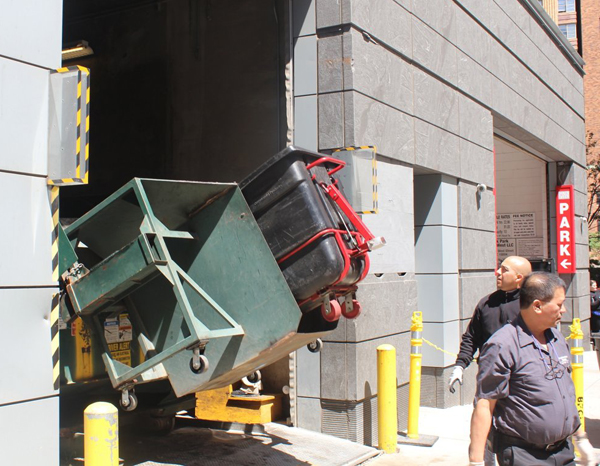
In Battery Park City, once the carts are rolled up to the compactor, it tips the contents back into the dumpster, where a hydraulic press compacts the trash to the rear of the container to make room for more.
The department already provides this service in Battery Park City. As Downtown Express reported in June, the waterfront development keeps trash off the curb using four trash compactors that handle refuse from more than 7,000 residential units and two local schools.
At a July meeting of the CB1 Quality of Life Committee with a representative from the Mayor’s office, Battery Park City resident Sandy Gordon described how the compactors keep the streets litter-free.
“My building has one of the major compactors for Battery Park City,” she said. “This is a huge facility, but I only notice it’s there when I walk in front of the open garage door. I don’t smell it, I don’t see it, it’s very discretely done, but it’s a huge volume of trash.”
In the rest of Downtown, however, household refuse is piled on narrow sidewalks at 4 p.m. three days a week for collection — and may sit there overnight before Sanitation trucks take it away.
Fern Cunningham, who lives near the 900-unit, Frank Gehry-designed building at 8 Spruce St., told the Mayor’s representative the piles of trash outside the tower demonstrate why the city’s current approach to waste collection Downtown is unsustainable.
“Three times a week they put out six-foot-high mountains of garbage. It is the most disgusting thing ever. I do not understand how a building can have 900 apartments and no one thought about where they should put the garbage,” she said.
Tommy Lin, director of constituent services for the Mayor’s Community Assistance Unit, responded by acknowledging that the sanitation problems in Downtown Manhattan are unique.
“Where I live in Queens, we don’t have six-foot-tall piles of garbage. Every community has different concerns,” he said. “So if there is a trend or something going on, this is something we can try to address.”
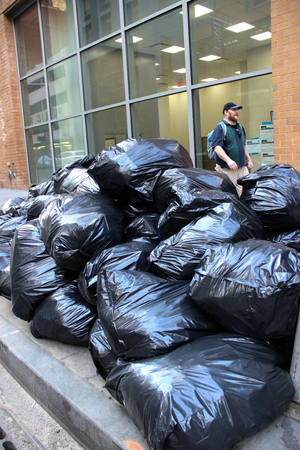
Mountains of garbage bags like this one outside 8 Spruce St. will become an ever more common fixture of Downtown sidewalks if the current residential boom continues apace.
Downtown’s convoluted layout, which grew out of the area’s colonial street map, makes adjusting to residential growth especially challenging. CB1 passed a resolution in June asking for the city to fund a mobility study aimed at making the increasingly dense neighborhood easier to navigate. The resolution grew out of CB1’s recent streetscape study, which found “cleaner streets” to be the number-one request among hundreds of pedestrians surveyed for the study.
“The historic street grid creates unique circumstances here,” said Diana Switaj, director of planning and land use for CB1. “A lot of the streets and sidewalks are more narrow than other places in the city. So people have a lot less room to maneuver around the piles of garbage.”
CB1’s streetscape study embraces the “smart city” concept that engineering firm Buro Happold is exploring for their “Make Way for Lower Manhattan” project. Buro Happold is examining how strategies used by other historic cities to keep their roads clutter free can be implemented Downtown.
“We believe it’s a good time to take a bird’s-eye view of what’s happening here and try a holistic, proactive approach to solving some of these issues,” Switaj said.
Paul Leonard, director of communications for Councilmember Margaret Chin, said “all options to address the trash situation Downtown are on the table.”
He said Chin is working alongside Councilmember Antonio Reynoso, chairman of the Committee on Sanitation & Solid Waste Management, to keep the sidewalks clear of garbage.
But Patrick Kennell, head of the Financial District Neighborhood Association, cautioned that there is “no silver bullet” to solve Lower Manhattan’s trash epidemic.
“This is going to require a lot of coordination and a lot of moving parts,” he said. “We recognize this is a complicated issue and it’s not going to be solved overnight. But this needs to be a top priority and we are going to continue to raise the issue.”



